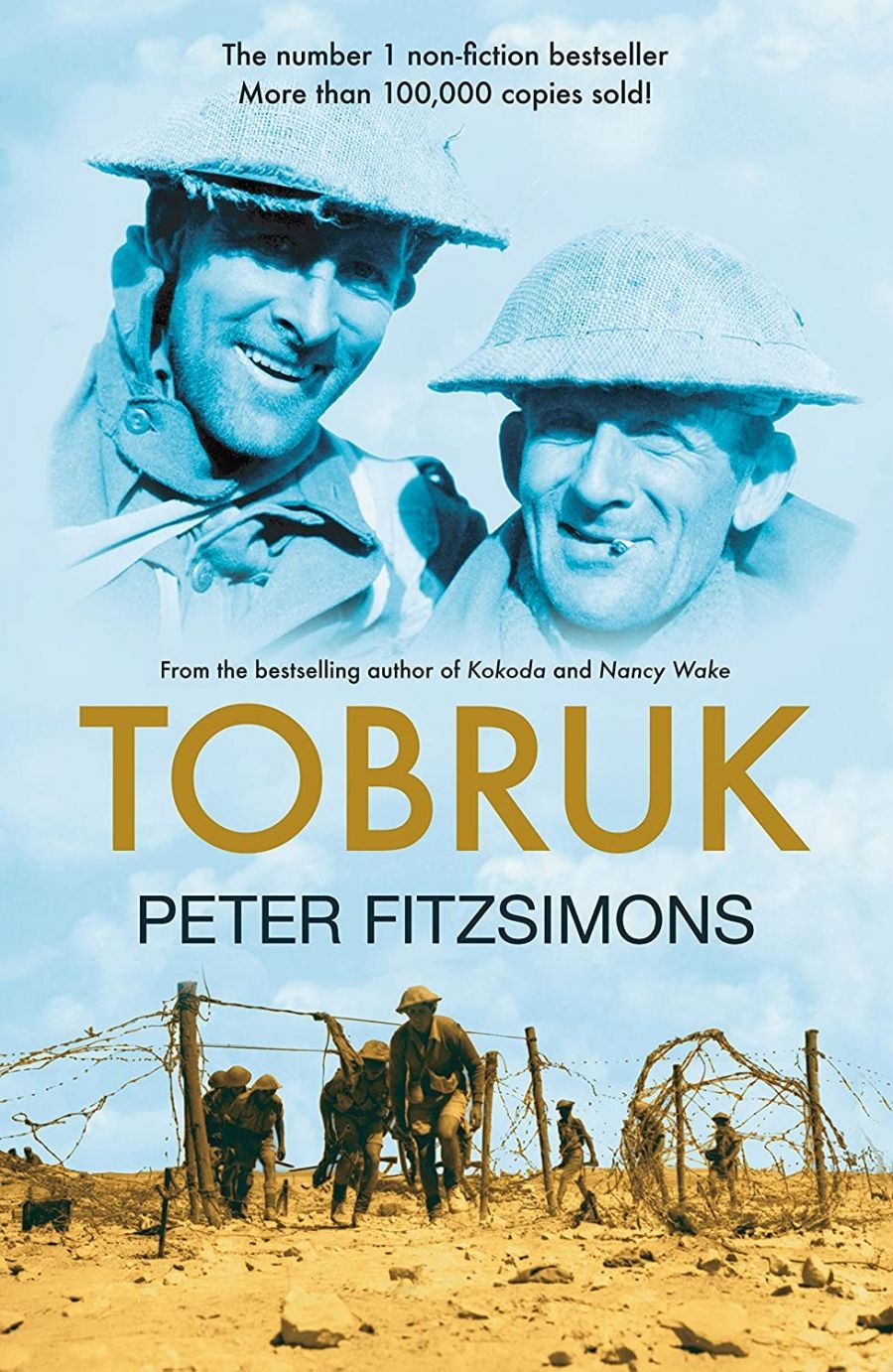
- Free Article: No
- Contents Category: History
- Review Article: Yes
- Online Only: No
- Custom Highlight Text:
Books like this are not written for people like me, and it is only fair to acknowledge that at the outset. ‘Australia’s most beloved popular historian’ (he must be, it says so on the inside flap) actually doesn’t want to be regarded as an historian, but as a storyteller (he says so himself), and so has little or no interest in satisfying the requirements and expectations that a professional historian might seek to apply to his undertaking. He will make a lot of money in the process, and good luck to him.
- Book 1 Title: Tobruk
- Book 1 Biblio: HarperCollins, $39.95 hb, 580 pp
- Book 1 Readings Link: booktopia.kh4ffx.net/4bZWo
What he won’t do is make a useful contribution to turning back the great unknowing of the past that characterises far too many younger Australians, and which, in part at least, is the target of recent initiatives by both the New South Wales and federal governments in reasserting a place for Australian history in the secondary school curriculum. God help us if this book represents the approach they wish to take. Which is a pity, because Fitzsimons actually had the makings of a serious work of popular history, if only he had imposed a bit of discipline on his writing and eschewed locker-room language and imagery. Does anyone – himself, his publishers, the reading public which they hope will buy this book in droves – think that anything is achieved by mindless abuse of British army officers as ‘pooftas’? That schoolyard denigration of the Italian military is a worthy substitute for understanding their part in the campaigns that Fitzsimons deals with? (And his depiction of the ‘Wops’ in this way shows just how little he really understands the war in North Africa. Perhaps he should have read a few accounts of the attack on Post 11 at Bardia – ‘Jo’ Gullett’s is listed in his bibliography – to counter the image of cowardly ‘Ities’, ready to run at the mere approach of big, bronzed Anzacs.)
Fitzsimons doesn’t offer us history between these covers (he’s right at least about that); rather, what he gives us is an old, romanticised view of war as translated by Barry McKenzie. He hero-worships Rommel and the Afrika Korps with an effusion not seen in serious writing on the subject since the 1950s. The AIF ‘covers itself with glory’ in these pages – what exactly does that mean? The real bad guys are, of course, the British, and so on.
He can do better than this, and indeed has done so before. His biography of Kim Beazley is a serious, astute and well-informed portrait of a significant national figure, one who may yet still become an outstanding prime minister. Tobruk, on the other hand, is a melange of prejudice and opinion that throttles the life out of some serious research (as evidenced by the bibliography and by the interviews and personal papers that he used). To his credit, he has visited the site of the siege, though he appears to place more store on finding Ron Barassi Senior’s grave than in any tactical insights that walking the ground might offer. This seems to me to be symptomatic of his whole approach.
What annoys me most about books like this is summed up in an old publishing adage – ‘the bad drives out the good’. There is a place for good, popular history that seeks to retell the events of the past in a manner accessible to a new general audience. It isn’t necessary for every book on a subject to break new scholarly or factual ground – general publishing would be in trouble otherwise. And there is nothing wrong with paying respect to one’s ancestors. In Fitzsimon’s relentlessly populist approach to the subject, however, the history is an early casualty, while as a piece of writing it is an excellent example of authorial excess and of the author as a form of bowerbird.
Clemenceau observed once that war is too important to be left to generals. On the strength of Tobruk, perhaps its history is too complex to be left to journalists.


Comments powered by CComment